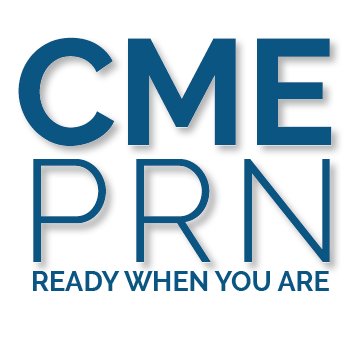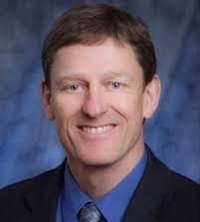
Total Credits: 2.5 including 2.5 AMA PRA Category 1 Credit(s)™, 2.5 AOA Category 1-A Credit(s), 2.5 AOBNMM Specialty Credit(s)
This program will expire and must be completed by 01/10/26.
Introduction to Osteopathic Manipulative Medicine focuses on introducing participants to osteopathic principles and practices. These presentations review the four tenets of osteopathic medicine, osteopathic manipulative treatment, somatic dysfunction, characteristics of direct and indirect OMT techniques, and the T.A.R.T. format used to palpate somatic dysfunction.
As part of this presentation, participants will learn soft tissue OMT, including indications and contraindications for soft tissue OMT, positioning the patient in a safe and comfortable manner while diagnosing and treating somatic dysfunction, and demonstrating efficient physician ergonomics while diagnosing and treating somatic dysfunction using soft tissue OMT.
Hands as Instruments
Learning Objectives:
• Identify, describe, and define soft tissue OMT
• Identify, describe, and define indications and contraindications for soft tissue OMT
• Demonstrate the ability to position the patient in a manner that is safe, comfortable, and maintains dignity while diagnosing and treating somatic dysfunction using soft tissue OMT
• Demonstrate efficient physician ergonomics while diagnosing and treating somatic dysfunction using soft tissue OMT
Introduction to Osteopathic Principles & Practices
Learning Objectives:
• Describe the Four Tenets of Osteopathic Medicine
• Define Osteopathic Manipulative Treatment (OMT)
• Define somatic dysfunction
• Describe the characteristics of direct OMT techniques
• Describe the characteristics of indirect OMT techniques
• Begin to palpate somatic dysfunction using the T.A.R.T. format
Soft Tissue of the Cervical Spine, Thoracic Spine & Lumbar Spine
Learning Objectives:
• Identify, describe, and define soft tissue OMT
• Identify, describe, and define indications and contraindications for soft tissue OMT
• Demonstrate the ability to position the patient in a manner that is safe, comfortable, and maintains dignity while diagnosing and treating somatic dysfunction using soft tissue OMT
• Demonstrate efficient physician ergonomics while diagnosing and treating somatic dysfunction using soft tissue OMT
Accreditation Statements:
The Missouri Association of Osteopathic Physicians and Surgeons (MAOPS) is accredited by the American Osteopathic Association to provide osteopathic continuing medical education for physicians. MAOPS designates this program for a maximum of 2.5 AOA Category 1-A credits and will report CME and specialty credits commensurate with the extent of the physician's participation.
The Missouri Association of Osteopathic Physicians and Surgeons (MAOPS) designates this live activity for a maximum of 2.5 AMA PRA Category 1 Creditsä. Physicians should claim only the credit commensurate with the extent of their participation in the activity.
This activity has been planned and implemented in accordance with the accreditation requirements and policies of the Accreditation Council for Continuing Medical Education (ACCME) through the joint providership of the Missouri Association of Osteopathic Physicians and Surgeons (MAOPS) and the National Center for Osteopathic Principles in Education (NCOPPE). MAOPS is accredited by the ACCME to provide continuing medical education for physicians.
Planning Disclosure:
The Continuing Education Steering Committee (CESC) and Osteopathic Principles and Practice (OPP) Committee members and planners/reviewers of this activity have no relevant financial relationships with any organization producing, marketing, reselling, distributing health care goods or services consumed by, or used on, patients relative to the content of this presentation.
AOA Grievance Policy:
All grievances should be in writing and should specify the nature of the grievance. Initially, all grievances should be directed to the MAOPS Executive Director, who will forward said grievance to the Simply CME Committee, that is made up of the executive directors from the co-sponsoring states. All grievances will receive an initial response in writing within 30 days of receipt. If the participant does not receive a satisfactory response, they can submit a complaint in writing to the Council on Continuing Medical Education of the AOA at 142 East Ontario Street, Chicago, IL 60611.

Brian Degenhardt, DO, is an associate professor at A.T. Still University’s Kirksville College of Osteopathic Medicine (ATSU-KCOM). Dr. Degenhardt is board certifed in Neuromusculoskeletal Medicine & Osteopathic Manipulative Medicine. He earned his doctor of osteopathic medicine from Des Moines University College of Osteopathic Medicine and Surgery, and he completed his residency at Northeast Regional Medical Center.
Dr. Degenhardt discloses that he has no relevant relationship with any organization producing, marketing, reselling, or distributing healthcare goods or services consumed by, or used on, patients relative to the content of this presentation.

Eric Snider, DO, is an associate professor at A.T. Still University’s Kirksville College of Osteopathic Medicine (ATSU-KCOM). He serves as the Osteopathic Manipulative Medicine department chairperson and as the program director for the Osteopathic Neuromusculoskeletal Medicine (ONMM) residency. Dr. Snider is board certified in Neuromusculoskeletal Medicine & Osteopathic Manipulative Medicine. He earned his Doctor of Osteopathy from the West Virginia School of Osteopathic Medicine (1999), and completed his internship and residency at Northeast Regional Medical Center (1999-2002). Dr. Snider discloses that he has no relevant relationship with any organization producing, marketing, reselling, or distributing healthcare goods or services consumed by, or used on, patients relative to the content of this presentation.
| 5 |
|
| 4 |
|
| 3 |
|
| 2 |
|
| 1 |
|
| Module Title | Speaker | Credits | Duration | Course Details | |||||||||||||||||||||||||||||||||||||||||||||
|---|---|---|---|---|---|---|---|---|---|---|---|---|---|---|---|---|---|---|---|---|---|---|---|---|---|---|---|---|---|---|---|---|---|---|---|---|---|---|---|---|---|---|---|---|---|---|---|---|---|
|
Hands as Instruments
|
Brian Degenhardt, DO
|
Total Credits: .5 including .5 AMA PRA Category 1 Credit(s)™ , .5 AOA Category 1-A Credit(s) | 29 Minutes | More info » | |||||||||||||||||||||||||||||||||||||||||||||
|
Introduction to Osteopathic Principles & Practices
|
Eric Snider, DO
|
Total Credits: 1.25 including 1.25 AMA PRA Category 1 Credit(s)™ , 1.25 AOA Category 1-A Credit(s) | 1 Hour 22 Minutes | More info » | |||||||||||||||||||||||||||||||||||||||||||||
|
Soft Tissue of the Cervical Spine, Thoracic Spine & Lumbar Spine
|
Eric Snider, DO
|
Total Credits: .5 including .5 AMA PRA Category 1 Credit(s)™ , .5 AOA Category 1-A Credit(s) | 35 Minutes | More info » | |||||||||||||||||||||||||||||||||||||||||||||
| Total Virtual Conference CE Credits Information | |||||||||||||||||||||||||||||||||||||||||||||||||